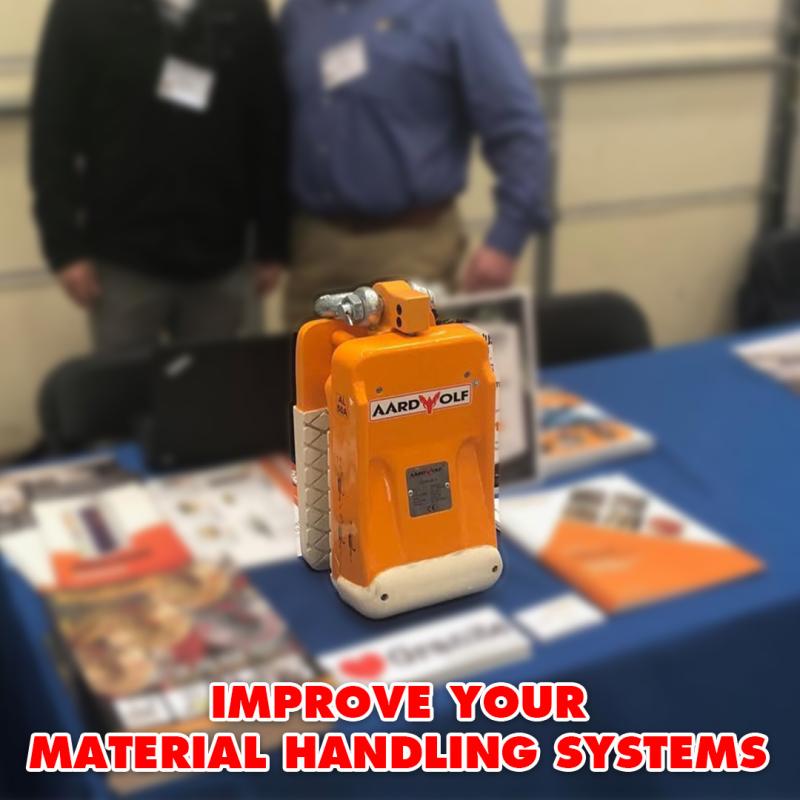



Optimizing material handling systems not only reduces operational costs and product damage but also enhances worker safety and throughput. By applying proven principles and integrating the right material handling equipment, material handling companies can transform their operations into high-performance networks that drive productivity and profitability.
Material handling encompasses all processes involved in transporting, storing and controlling goods from their point of origin to final delivery. It covers manual tasks—such as lifting, carrying and stacking—as well as mechanized and automated solutions like conveyors, cranes and robotic systems. Efficient handling material ensures that inventory moves smoothly through each node of the supply chain without bottlenecks or damage.
Choosing the right material handling equipment—from simple lifting clamp attachments to advanced vacuum lifter slab lifter systems—dictates how effectively loads are moved and protected. Equipment selection should align with load characteristics, work environment and throughput requirements to minimize manual strain and maximize safety.
HLS outlines ten fundamental principles that guide the design and improvement of material handling systems. Applying these tenets helps material handling companies build workflows that are both ergonomic and cost-effective.
A successful material handling system begins with strategic planning. Define performance objectives, map material flows and involve cross-functional teams—from operations managers to finance—to ensure equipment and processes meet organizational needs.
Standardizing controls, equipment and software reduces complexity and errors. Modular systems ensure flexibility for future expansion, allowing material handling industry leaders to scale without complete redesigns.
Analyze the nature of each task to minimize unnecessary movements. Whenever possible, leverage gravity or straight-line flows to reduce manual exertion. Eliminating redundant steps streamlines processes and cuts cycle times.
Design systems with human capabilities in mind to lower injury rates. Ensuring that workstations and lifting equipment—such as scissor lifter mechanisms—support neutral postures prevents musculoskeletal disorders and boosts morale.
Consolidate individual items into unit loads—pallets, totes or crates—to minimize handling frequency. Proper sizing of conveyors and hoists around these unit loads drives faster, safer operations.
Optimize floor and vertical space. Implement high-density racking and automated storage/retrieval systems to increase capacity without expanding footprints. Clean, clutter-free aisles support powered vehicles and reduce collision risks.
Integrate all stages—from receiving and storage to picking, packing and shipping—into a cohesive network. Seamless data exchange between Warehouse Management Systems (WMS) and control software prevents silos and synchronizes workflows.
Consider energy consumption and sustainability. Choose equipment with low lifecycle costs and recyclable components, and ensure safe handling of hazardous materials by following environmental best practices.
Automate repetitive, high-volume tasks with conveyors, Automated Guided Vehicles (AGVs) and robotics. Automation not only lifts the burden from workers but also delivers consistent cycle times and reduces human error.
Assess total cost of ownership when selecting material handling equipment—including acquisition, installation, maintenance and disposal—to make financially sound decisions that support long-term efficiency.
Selecting and deploying the right lifting equipment and handling systems transforms throughput and enhances safety across your facility.
For high-capacity overhead loads, use overhead gantry cranes that combine mobility with precise load control. Gantry crane material handling is ideal for staging, assembly and heavy parts transfer, reducing manual lifting risks and speeding cycle times.
When floor space is at a premium, wall-mounted jib cranes offer a 360° range of motion. They handle localized loads efficiently while freeing up aisles for other material handling equipment.
Consult on powered handling systems to match your throughput requirements. Solutions like power conveyors, lift tables and stackers automate vertical and horizontal transport, reducing manual intervention and improving uptime.
Prevent load shifts during transport or storage by deploying robust ratchet tie down traps. Discover how the heavy duty down straps solutions secure pallets and flatbeds, ensuring materials remain immobile under dynamic conditions.
Secure, vertical lifts of sheet goods—such as stone or steel—are handled safely by ensuring Aardwolf scissor lifter and Aardwolf slab lifters efficiency. These systems eliminate awkward manual grips and deliver precise positioning.
For delicate, non-porous materials, electric vacuum lifters provide suction-based handling that protects surfaces from scratches and reduces operator fatigue. They excel in glass, painted panels and smooth sheet applications.
A well-planned warehouse layout minimizes travel distances and supports seamless material flows.
Zone Storage by Velocity: Place fast-moving SKUs near packing and shipping areas to cut picking times.
Clear Aisles: Maintain unobstructed pathways for forklifts and AGVs to prevent collisions and enable quick response to pick requests.
Staging Areas: Designate buffer zones for incoming and outgoing loads to reduce congestion and allow pre-inspection.
Cross-Docking: Bypass storage entirely for high-throughput items by directly transferring inbound goods to outbound vehicles.
Continuous improvement demands staying ahead of emerging trends in the material handling industry.
IoT and Data Analytics: Leverage real-time tracking of equipment and loads to predict maintenance, balance workloads and identify bottlenecks.
Collaborative Robotics: Integrate cobots alongside human operators for safe, flexible automation in picking, packing and assembly.
Digital Twins: Create simulated replicas of your material handling systems to test layout changes, process tweaks and equipment upgrades before physical rollout.
By embedding innovation into your systems, material handling companies can sustain high levels of service, reduce total costs and adapt rapidly to changing market demands.
Improving the efficiency of material handling systems is a multifaceted endeavor that combines strategic planning, adherence to proven principles and the integration of advanced material handling equipment. By applying the ten key principles, deploying the right lift and transport solutions—such as overhead gantry cranes, scissor lifters, slab lifters and electric vacuum lifters—and optimizing facility layouts, you create a robust, safe and efficient environment that drives supply chain excellence. Embrace innovation, measure performance and iterate continuously to keep your material handling operations ahead of the curve.
Sign up to receive the latest info on new Aardwolf products, special offers and more.
By signing up you agree to receive emails from Aardwolf with news, special offers, promotions and other information. You can unsubscribe at any time.